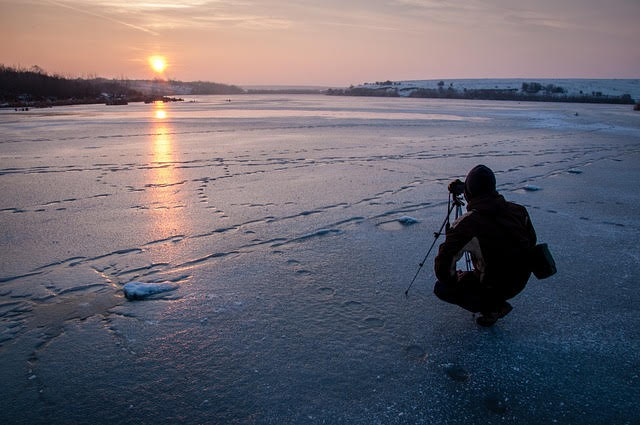Extreme Temperature Photography: The Do’s and (Definitely) Don’ts
A parched, mudcracked desert floor. An ice-kissed cobweb suspended between the barren twigs of a tree in winter. An Arctic sunrise. The photographic holy grail of the Aurora Borealis.
All amazing images, and all involve shooting in extreme temperatures in order to attain them.
You pursuits at photography school are likely to see you put yourself in strange situations in order to push your craft, and when it comes to testing the limits of what’s achievable, the temperature of the environment you’re shooting in can sometimes impose a very physical barrier.
You don’t want to put your (or the school’s) valuable equipment at risk of damage, but at the same time you’ll want to get the best out of your extreme temperature shots.
Here’s how. Firstly, we’ll start off with (and close on) a note regarding personal safety:
1. Let Someone Know Where You’re Going (and When You’ll Be Back)

As with any outdoor activity that carries a degree of risk, don’t wander off into the snowy tundra or blazing desert without letting someone know what your plan is so they can raise a flag if you don’t return.
The last thing you want is to be stuck in a canyon with your arm crushed under a rock, trying to work out if it’s even possible to saw off a limb using a lens cap.
Let’s move on to the technical considerations, including:

2. Condensation
Condensation is your equipment’s #1 enemy when it comes to extreme temperature photography, and the damage it can cause to the inside of internal elements can be permanent (not to mention warranty-voiding, since the manufacturer will rightly argue that condensation damage is user-induced.)
Alongside all this, condensation on the inside of a lens—and the dry spots it can leave afterwards—can easily ruin a shoot, and again, may end up being a permanent feature of your lens.
So, let’s discuss how to avoid all this. Whether in extreme heat or cold, the actual temperature doesn’t matter; it’s the temperature differential that makes the difference.
Taking your camera out of an air-conditioned van and into a Phoenix Summer’s heat—or, conversely—entering your heated apartment after shooting in sub-zero temperatures will both have the same effect.
The only surefire way to counteract this is by making sure the camera’s temperature doesn’t change too quickly. Ergo, warm it up and cool it down gradually depending on what manner of extreme you’re entering/leaving.
Removing moisture from the air near the camera also helps, which is why many photographers working in extreme temperatures like to keep the camera in an airtight plastic bag with a few sachets of silica gel (in cold weather, condensation will also form on the bag rather than on the camera.)
Be sure to look up the camera’s humidity operating range, too. If the manufacturer warns against shooting in areas with more than 60% humidity, you might want to cancel that trip you had planned to the Amazon.
3. You’ll Want Spare Batteries in the Cold

You’ve spent the best part of an evening making your way through ice and snow to the middle of nowhere in order to enjoy a couple of hours shooting a beautiful, starry Winter sky… only to have what were fully charged batteries die in 15 minutes.
Camera batteries loathe the cold, and show their protest by losing their charge incredibly quickly while in it. Take spares, or plan around a very short photo shoot!
4. UV Filter

Which would you rather wreck: your $600 lens, or a $5 UV filter?
It goes without saying that extremely hot conditions are likely brought about by searing sunlight bearing down on you and your equipment, so a UV filter is a must… but the same applies on the other side of the thermometer, too.
When working in areas with snow, low winter sunlight is going to reflect off that stuff like nobody’s business and give your lenses and filters one heck of a UV bath. It’ll pay dividends to protect it all with a decent UV filter.
Lastly, and certainly not least…
5. Never Put Yourself at Risk

Making sure your camera is up to the rigors of a sub-zero night of shooting is one thing, but if you lose your fingers to frostbite the camera’s not going to be of much use to you.
This may sound obvious, but it’s surprising how blindsided we can get as photographers in the hunt of that perfect shot. No matter whether you’re shooting in hot or cold, be sure to take adequate precautions based on the environment (and doubly make sure it’s not going to get any more extreme than you planned for.)
There isn’t a single photo you could possibly get that’s worth getting heat stroke or dying of hypothermia…
… but there are a lot of excellent shots waiting to be taken safely and without risk when just a little bit of planning and common sense is applied.
Wrap up and get out there!
